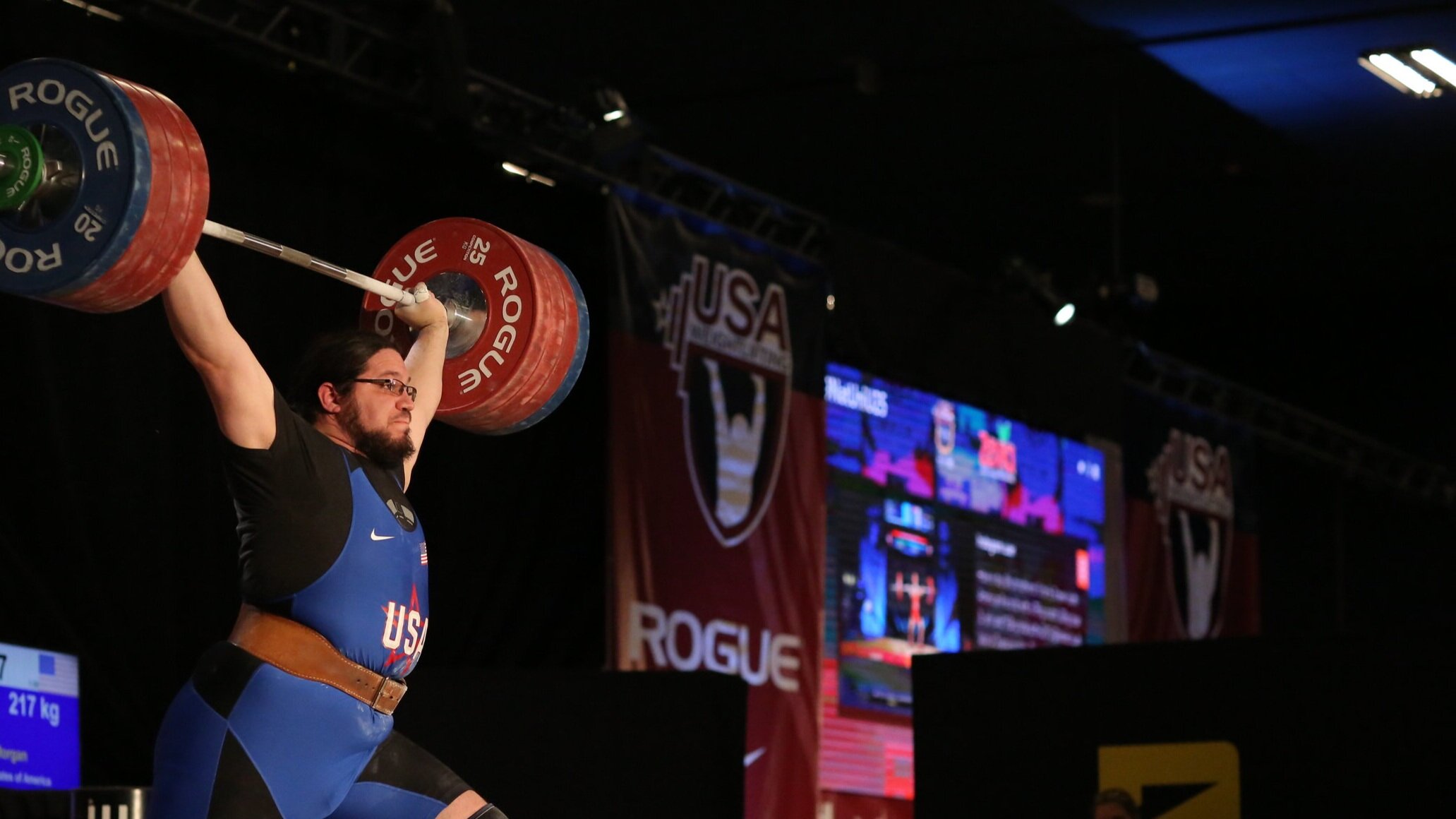
ABOUT OUR SPORT
PARTICIPANTS
In the sport of weightlifting, which is governed by the International Weightlifting Federation (IWF) competitions are organized for men and women and athletes compete in four age groups:
YOUTH: 13 - 17 years of age
JUNIOR: 15 - 20 years of age
SENIOR: 15+ years of age
MASTERS: 35+ years of age
There are also ten separate bodyweight categories for Junior and Senior men, as well as women.
LIFTS
In the sport of weightlifting, the International Weightlifting Federation (IWF) recognizes two lifts which must be executed in the following sequence: The Snatch and the Clean and Jerk.
Both lifts must be executed with two hands. A maximum of three (3) attempts is allowed in each lift.
THE SNATCH
The Snatch: The barbell is centred horizontally on the competition platform. The athlete takes the start position behind the barbell. The athlete grips the barbell and bends at the knees. The barbell is gripped, palms downward and pulled in a single movement from the platform to the full extent of both arms above the head, while either splitting or bending the legs. During this continuous movement upward the barbell should remain close to the body and may slide along the thighs. No part of the body other than the feet may touch the platform during the execution of the Snatch. The athlete may recover in his / her own time, either from a split or a squat position. The lifted weight must be maintained in the final motionless position, with both arms and legs fully extended and feet on the same line and parallel to the plane of the trunk and the barbell. The athlete waits for the Referees’ signal to replace the barbell on the competition platform. The Referees give the signal to lower the barbell as soon as the athlete becomes motionless in all parts of the body.
THE CLEAN AND JERK
The first part, the Clean: The barbell is centred horizontally on the centre of the competition platform. The athlete takes the start position behind the barbell. The athlete grips the barbell and bends at the knees. The barbell is gripped, palm downward and pulled in a single movement from the platform to the shoulders, while either splitting or bending the legs. During this continuous movement upward the barbell should remain close to the body and the barbell may slide along the thighs. The barbell must not touch the chest before it stops at the final position either on the clavicles, chest or on fully bent arms. The athlete’s feet must return to the same line and the legs must be fully extended before starting the Jerk. No part of the body other than the feet may touch the platform during the execution of the Clean. The athlete may recover in his / her own time and must finish with the feet on the same line and parallel to the plane of the trunk and the barbell.
The second part, the Jerk: The athlete must become motionless with the knees fully extended before starting the Jerk. The athlete bends and dynamically extends the legs and arms simultaneously to move the barbell upward in one motion to the full extent of the arms, while either splitting or bending the legs. The athlete returns his / her feet to the same line parallel to the plane of the trunk and the barbell with his / her arms and legs fully extended. The athlete waits for the Referees’ signal to replace the barbell on the competition platform. The Referees give the signal to lower the barbell as soon as the athlete becomes motionless in all parts of the body. Before the Jerk, the athlete may adjust the position of the barbell for the following reasons: a) to withdraw or “unhook” the thumbs b) if breathing is impeded c) if the barbell causes pain d) to change the width of the grip.
More information on equipment, uniforms, and competition rules and regulations can be found here.






